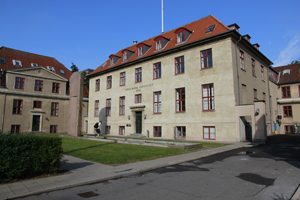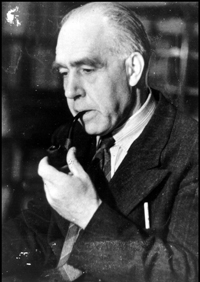Niels Bohr Institute appointed Historic Site
The European Physical Society has declared the Niels Bohr Institute as a Historical Site with great international importance for developments in physics and research. The Niels Bohr Institute in Copenhagen was established in 1921 for the physicist and Nobel laureate, Niels Bohr, who in 1913 created the groundbreaking atomic model that formed the basis for our understanding of how the world is constructed, and later as the basis for quantum mechanics, which has revolutionised technological development.

The European Physical Society has declared the Niels Bohr Institute as a Historical Site with great international importance for developments in physics and research. The Niels Bohr Institute has been selected on this basis: “This is where the foundation of atomic physics and modern physics were created in a creative scientific environment inspired by Niels Bohr in the 1920s and 30s.”
Across the world organisations declare UNESCO sites, buildings and monuments as the cultural or natural heritage of mankind. Since science is a fundamental part of our culture, the European Physical Society, EPS, has – like the American Physics Organisation – declared particularly important sites as ‘Historic Sites’ for science.
The Niels Bohr Institute in Copenhagen has been selected on this basis: “This is where the foundation of atomic physics and modern physics were created in a creative scientific environment inspired by Niels Bohr in the 1920s and 30s.”
International environment
For years, Niels Bohr worked in humble conditions at the University of Copenhagen, but in 1921 he got his very own Institute of Theoretical Physics. It was a brand new building on Blegdamsvej 17 and was the setting for Bohr’s work for the rest of his life.

Niels Bohr created a fundamental change in thinking in physics. Niels Bohr’s pioneering atomic model has formed the basis for our understanding of how the world is constructed and for quantum mechanics, which has revolutionised technological development.
Niels Bohr created a fundamental change in thinking in physics and at the same time he managed to create and international environment that attracted some of the best scientists from around the world. The many foreign researchers visited Copenhagen, where they exchanged views and ideas with each other and with Niels Bohr. Several of them were later awarded the Nobel Prize for their work.
The Niels Bohr Institute at Blegdamsvej in Copenhagen has been the setting of no fewer than four Nobel laureates. Niels Bohr won the Nobel Prize in 1922 for his pioneering model of the atom, George de Hevesy received the Nobel Prize in 1943 for his pioneering work in nuclear medicine, and in 1975 Aage Bohr and Ben Mottelson received the Nobel Prize for their model of the structure of the atomic nucleus.
Atomic model basis for technological development
Niels Bohr’s pioneering atomic model has formed the basis for our understanding of how the world is constructed and for quantum mechanics, which has revolutionised technological development.
All of the things that we surround ourselves with and find very natural and indispensible are based on quantum mechanics. It centres around all of the electronics found in modern appliances, computers, mobile phones, communication devices, CD players, flat panel displays, lasers and special nuclear medicine scanners for the diagnosis and treatment of diseases. One analysis shows that over 30 percent of the western world’s GDP can be traced back to Niels Bohr’s articles from 1913.
The selection of the Niels Bohr Institute as a Historic Site will be celebrated at an event on 3 December in the historic Auditorium A, which the President of the European Physical Society, John Dudley, will attend.
A plaque will be placed on the building with the inscription: “This is where the foundation of atomic physics and modern physics were created in a creative scientific environment inspired by Niels Bohr in the 1920s and 30s.”
Research at NBI
Sheldon Lee Glashow
|


 Blegdamsvej was the setting for my Nobel Prize. It was based on a paper that I conceived and composed in 1960 at what would later be known as the Niels Bohr Institute. Published in Nuclear Physics in 1961, It is one of the most cited scientific papers submitted from Denmark.
Blegdamsvej was the setting for my Nobel Prize. It was based on a paper that I conceived and composed in 1960 at what would later be known as the Niels Bohr Institute. Published in Nuclear Physics in 1961, It is one of the most cited scientific papers submitted from Denmark.